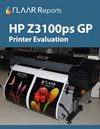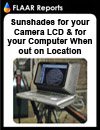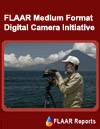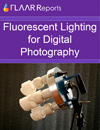Canon PowerShot D10, for underwater photography with no housing needed
 |
This is an easy to use camera, small and portable. The results are worth the camera price ($299). My only complaint is that it has no lens cap, so is easy to scatch the lens, especially if you carry it in your pocket.
Olympus, Pentax, Panasonic and Fuji each offer point-and-shoot compact cameras that can be used a few feet underwater. But I am fuly content with my Canon PowerShot D10 (except for the lack of lens cap).
• Canon PowerShot D10
• Fujifilm FinePixXP10
• Olympus Stylus Touch, several models
• Panasonic Lumix DMC-TS1
• Pentax Optio WP, several models, one only 5 megapixels; only 3X zoom
Be wary: 90% of the so-called reviews simply want you to buy any and every camera they talk about so they can collect % fee from Amazon.com Of the above cameras, the only one I would consider looking more closely at would be the Panasonic.
Canon PowerShot D10, review for underwater photography
I have been doing research on water lilies in the jungles of Guatemala for several decades, but more intensely during 2007 onward. By 2009 I realized that I needed an underwater camera to photograph water lily plants and flowers from below the surface.
My PhD dissertation in 1985 was primarily on the Maya reverence for the water lily flower and pads. Monsters und Men (the coffee table book publication, auf Deutsch, based on my dissertation) had many photos of the water lily flowers and pads, but all taken from the shore or from a boat.
I gradually realized that the Maya were showing the plant, and pads, from underneath the surface of the water. So I began to look around for an underwater camera that would be idiot proof. I was never very satisfied with the results from my Nikonos underwater camera. I used it once or twice and abandoned it in my closet for the last several decades.
Eduardo Sacayon assisted with looking around on the Internet for a good underwater camera that would require no underwater housing. We needed to photograph underwater only down to about 10 feet (3 to 4 meters). When we get ready to photograph the other underwater features of Maya cosmology, conch shells, sponges, sea anemones, etc, then we will need a more serious underwater camera for depths down to the limits that a Maya shell diver a thousand years ago could descend with no equipment.
So Eduardo suggested beginning with the Canon PowerShot D10. Once I tried this camera underwater I was very pleased. The photographs turned out well (considering the $300 price of the camera). And the camera required no intelligence to use (I could probably get even better photographs if I had the patience to read the instruction manual and learn to operate the controls). But I am spoiled with a 22-megapixel Phase One P25+ digital back on a Hasselblad camera which requires less than one hour to learn how to use every feature! Ironic that the more sophisticated the camera, the fewer pages the instruction manual is. In comparison, the instruction manual to a Nikon D300 camera is over 200 pages! That is too much.
 |
| Nicholas Hellmuth using the underwater camerca Canon D10 at Monterrico, Guatemala. |
Waterproof cameras (Canon D10) compared with underwater housings
After I saw how good the photographs were from the Canon PowerShot D10, I figured that if we had a better camera, which would of course require an underwater housing, that we could get even more photographs.
So Eduardo went back to do research, and ended up at Backscatter. We naively ended up with being sold a $3000 system.
When I unpacked the boxes and saw all the plastic-looking Fisheye FIX accessories I was not impressed. And when I saw the lousy results of the several days underwater photography it was not easy to swallow my suspicion that this system was not worth the high price we paid for it.
The owner of Backscatter was polite and helpful, and indicated that some of the settings on the camera and flash may have been inappropriate. He felt this contributed to the dismal quality of the results. So as a courtesy I will take the camera to water that is less murky and will try again in December.
The first photography with the Fisheye FIX housing and SEA&SEA flash was in a mangrove swamp a hundred meters inland from the Pacific coast of Guatemala. The Canon PowerShot D10 did acceptably well in the murky water. The TEN TIMES more expensive system via Backscatter did no better at all. So a $300 Canon PowerShot D10 took better photographs than a $3000 Fisheye FIX with SEA&SEA lighting with a Canon S90.
I will update this page when we get both cameras back out into the water, but when the water is more clear (during flood season the water is murky with mud particles; during the dry season the water is more clear).
We will also experiment with underwater housings for our Canon EOS-1ds Mark III and Nikon D300 camera, to see how these compare with the Fisheye FIX.
Comments on the Canon PowerShot D10 on other web sites:
scubadiverinfo.com/3_cameras_canon_powershot_d10.html
To many other reviews are sham reviews: simply PR paid by click referral fees to camera dealers.
I only trust a review if the author actually used the camera in a real photographic situation.
Cost comparison and compare prices
When I find a product I like, I tend to accept the price if it is realistic. To save $50 and get a camera with less features is not my way of saving money. Of course we shop for price: checking B+H compared with Amazon.com. We are always have to be aware of bait-and-switch scams, and the scam of giving a low price but then charging excessively for shipping!
Magazines on Scuba and Diving that feature Underwater Photography
The British Society of Underwater Photographers has a magazine-like web site, bsoup.org
Brief List of Books on Underwater Digital Photography
AW, M.
2006 An essential Guide to Digital Underwater Photography. 2nd edition.
DRAFAHL, Jack and DRAFAHL, Sue
2005 Master Guide for Underwater Digital Photography. Amherst Media, 128 pages.
DRAFAHL, Jack and DRAFAHL, Sue
2006 Adobe Photoshop for underwater photographers. Amherst Media, 224 pages.
EDGE, Martin
2010 The Underwater Photographer. Fourth edition. Focal Press.
FERRARI, A. and FERRARI, A.
2007 A Diver's Guide to the Art of Underwater Photography- Creative Techniques and Camera Systems for Digital and Film. Nautilus Publishing Sdn Bhd. Distributed by NHBS.
GATES, Larry
2010 The Beginner’s Guide to Underwater Digital Photography. Amherst Media, 128 pages.
MUNN, Maria
2010 Underwater Photography for Compact Camera Users: A Step By-step Guide to Taking Professional Photos with a Point and Shoot Camera. Ocean Visions. 176 pages.
MUNN, Maria
2010 Underwater Photography for Beginners. A Step-by-Step Guide to Taking Professional Underwater Photographs with a Digital Compact Camera. Ocean Visions. 176 pages.
First posted November 2, 2010
after spending five days at Photokina photography equipment expo in Germany. FLAAR goes to Photokina every two years since 1998.
Free Reports (Inquiry Form)
Additional links of our FLAAR sites |
| Rigid Printable Materials |
| Printing on Glass |
| Sandwich board for recyclable furniture! |
| Metallic Effects |
Free Download Reports
| Home | About Us | Consulting | About FLAAR Reports | Site Map | Privacy Statement | back to top | |||||
|
|||||||||||
www.digital-photography.org is part of the FLAAR network © 2001-2021. If you notice a bad link, missing photos, misspellings, please report to the webmaster: |
|||||||||||


































































